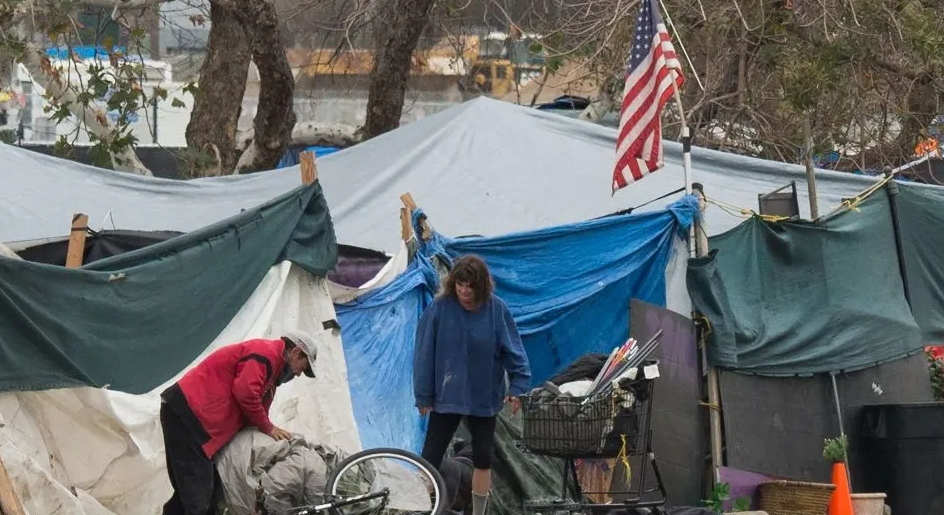
IN politics, especially during times of crisis, the best place to be is in the opposition or the minority bloc. You’re in office, but you’re not in charge — someone else is, and that someone can and will be blamed for most or even everything that is going wrong precisely because they’re in power. After all, as a minority bloc member, your major proposals, if you have any, are likely to end up nowhere. Your opinions, however well stated, can be ignored. Nonetheless, as a public official you have an open mic, and can criticize, fairly or unfairly, the powers-that-be for their failure to act or even for “overacting.”
In the CNMI, its “shockingly high” poverty rate has been a favorite talking point for the political opposition —whoever they may be — throughout the years. In 2020, for example, it was estimated that about 52% (!) of the CNMI population lived below the poverty level. If you’ve never been to the CNMI, that figure might evoke Third-World imagery as you wonder how such a reality is possible “under the American flag.”
However, that number starts to make sense once you realize it’s based on federal guidelines and derived from the metrics of a highly developed nation with the world’s largest and most dynamic economy. An acquaintance with economics can help explain why it is problematic to apply the poverty thresholds of a huge, prosperous nation with over 300 million people to a small, remote group of islands with a population of about 49,000 — or possibly less — and a one-industry economy.
It’s not even apples and oranges, but apples and geckos.
Those who wring their hands over the CNMI’s “high poverty rate” usually don’t mention the islands’ low tax rates, low crime rates, year-long sunny weather, and wide array of local and federal assistance programs, including those for food, healthcare, education, housing, utilities, small businesses, persons with disabilities, etc. Government-funded opportunities for local residents are widely available. And those opportunities include those offered in the greatest nation on Earth — the United States, of which the CNMI is a part.
Misleading stats
In their very important book published in 2022, “The Myth of American Inequality,” economists Phil Gramm, Robert Ekelund and John Early showed that “misleading government statistics have led many Americans to misperceive the prevalence of poverty….”
According to the authors, “There are certainly people who are physically or mentally unable to care for themselves and have fallen through the cracks in the system that delivers transfer payments, but, for all practical purposes, poverty due to a lack of public or private support has been virtually eliminated in America.”
They also pointed out that the post-tax, post-transfer poverty rate is not the 12.3% the Census Bureau reported in 2017, but about 3%. “The enormous difference is because the Census Bureau is not measuring the right things,” as economist Art Camden said in his review of the book.
In the CNMI, those who bewail its “widespread poverty” are usually unaware that during the U.S.-administered Trust Territory era, many local residents experienced Third World poverty.
In 1969, the Micronesian Reporter published a poem titled “Poverty Is” by a young Saipan resident. He painted a world that is now inconceivable in the self-governing CNMI, even today, as it struggles economically:
“Poverty is getting married at 23, earning 50 cents an hour. This includes not having a house.
“Poverty is you expect to live with your mother-in-law, with 4 kids.
“Poverty is going to your neighbor to wash your clothes, clothes you have worn several days to work….
“Poverty is finding the cupboard empty….
“Poverty is looking at your wife’s rosy cheeks turning pale.
“Poverty is owning a house built by materials from crates as old as World War II halfway eaten by termites and weather-beaten, cracked.
“Poverty is having diseases destroying breadfruit and coconut trees all over the place.
“Poverty is planting crops on barren soil.
“Poverty is your home demolished, losing your clothes, finding broken dishes, soaked rice sacks and broken chairs, after each typhoon.
“Poverty is living with 6 people in an 8’ x 16’ shack for three months, with a baby 60 days old.
“Poverty is picking up pieces and putting them together….
“Poverty is dressed with creases on your worn trousers, faded and mended shirt on your back….
“Poverty is taking a shower with a trickle for water, the water running red from corrosions in the pipes, 20 years old….
“Poverty is seeing your darling children, with their tummys growing bigger from worms.
“Poverty is paying or not being able to pay the hospital bills.
“Poverty is getting sick.
“Poverty is catching the flu and the only medicine you get is aspirin tablets….
“Poverty is seeing your children attending classes at school, under army tents.
“Poverty is seeing your island overgrown with tangantangan trees….
“Poverty is getting surplus equipment, excess needs of other federal agencies.
“Poverty is having holes on the roads.
“Poverty is seeing a bulldozer on the road shoulder, for a week.
“Poverty is when it rains the roads are flooded.
“Poverty is politics….”
Send feedback to editor@mvariety.com











